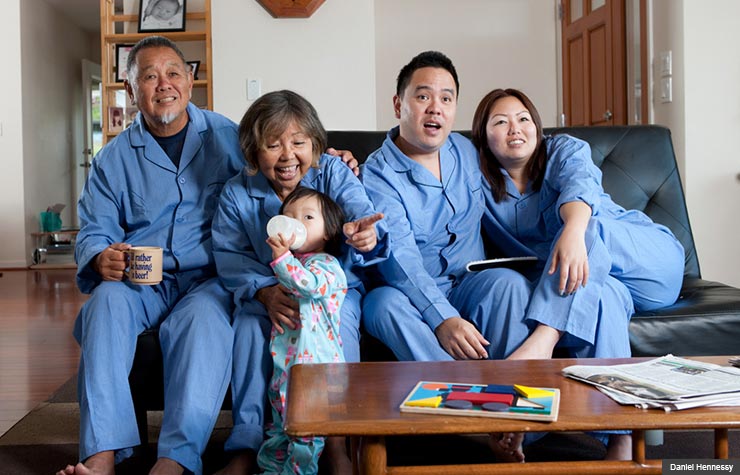Staying Fit
Have you noticed more people around your neighborhood? That long-gone college grad is back across the street, and Grandma's moved in, too. The older couple next door has a full house — their son, his wife and two kids. The ranch a few doors down was just bought — jointly — by adult children and their parents.
Three generations under one roof, known as multigenerational housing, is here to stay.


AARP Membership— $12 for your first year when you sign up for Automatic Renewal
Get instant access to members-only products and hundreds of discounts, a free second membership, and a subscription to AARP the Magazine.


According to a Pew Research Center analysis of the latest U.S. Census Bureau data, approximately 51 million Americans, or 16.7 percent of the population, live in a house with at least two adult generations, or a grandparent and at least one other generation, under one roof. The Pew analysis also reported a 10.5 percent increase in multigeneration households from 2007 to 2009. And a 2012 survey by national home builder PulteGroup found that 32 percent of adult children expect to eventually share their house with a parent.
"It used to be older people whose money had run out who were living with their children, and now it's the next generation that can't keep up," says Louis Tenenbaum, a founder of the Aging in Place Institute, which promotes "multigen" remodeling.
True, multigenerational families bunking together is hardly news in certain cultures. In 2009, 9.4 percent of Asian households, 9.5 percent of African American ones and 10.3 percent of Latino homes were multigenerational (compared with 3.7 percent of non-Hispanic white households).
Before Sharing a Multigenerational Home, You'll Want to
- Discuss expectations and responsibilities before the move: Who's going to pay what bills for current and future expenses? Which areas are communal space and which are private? Are there family rules for laundry, TV, cleaning, cooking, opposite-sex sleepovers?
- Discuss parental responsibilities with other siblings: What will they do — take Dad to doctors, pay his bills online, offer respite care?
- Include age-friendly and privacy features if renovating or building: Consider wider doorways, brighter lighting, grab bars, low-pile carpeting and a separate space for additional family members. Find out if there are zoning restrictions for attached dwellings.
- Divvy up chores: If possible, let family members choose the ones they want.
- Accept realities: Understand that people's personalities and habits don't usually change.
But strong indications show that multigenerational living is on the rise: The U.S. 65-plus population is expected to more than double to 92 million by 2060. Sixty-one percent of Americans ages 25 to 34 have friends or family who have moved back in with parents or relatives (because they have no job, no money and no other place to live). And the latest census projections show the clear growth in cultures, such as Latinos, that already embrace multigenerational housing (non-Hispanic whites will no longer make up the majority of the population by 2043).
Could this be an idyllic world of built-in child care, elder care and three square meals? A solution for avoiding isolation in old age? A way for pooled finances to go further?
Another Pew report did find that more than three-quarters of "boomerangs" — the young adults ages 25 to 34 who move back in with their parents — were satisfied with their living situation. Almost half paid rent and nearly 90 percent helped with household expenses. And in a 2011 report of multigen dwellers by Generations United, a Washington, D.C.-based advocacy group, 82 percent said the setup brought them closer, 72 percent mentioned improved finances, and 75 percent saw care benefits.
Consider long-term care costs alone. A 2012 MetLife Mature Market Institute survey put the average annual cost of a private nursing home room at $90,520, a semiprivate at $81,030 and assisted living at $42,600. Add to those costs the value of peace of mind knowing a loved one is being cared for by family, and multigenerational housing may be the new assisted living plan.

































































More on Home and Family
10 Unique Retirement Gift Ideas
Find a present or experience that reflects individuality9 Signs You're an Awesome Grandma
You know what's up in your grandchildren's world, but introduce your world too